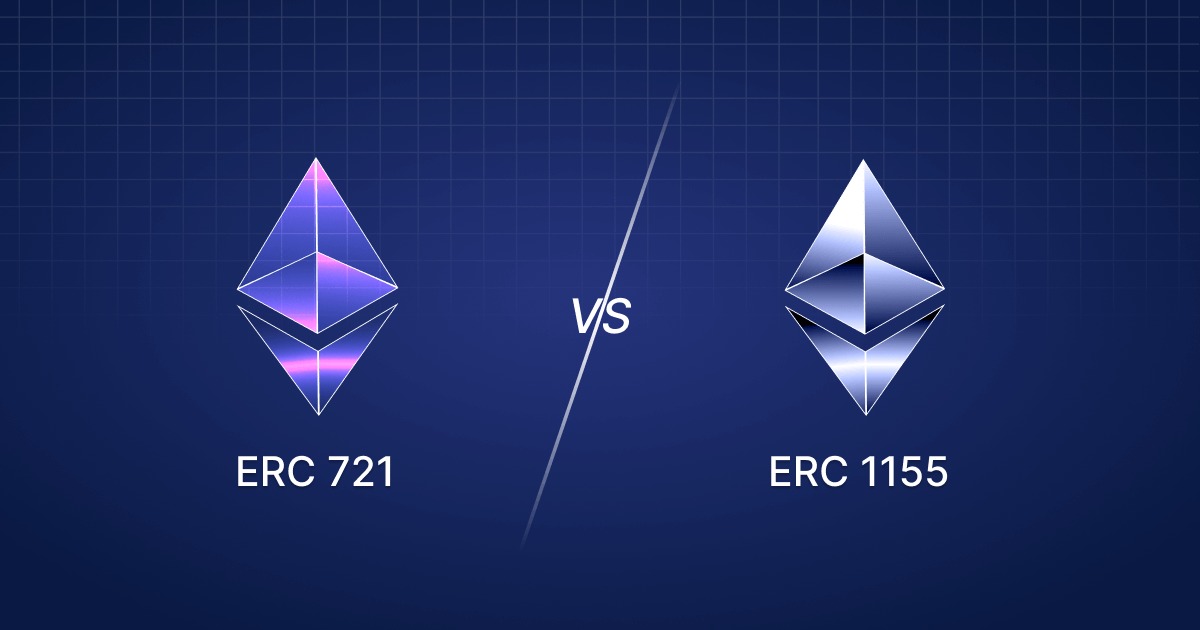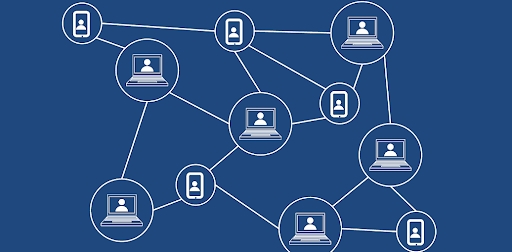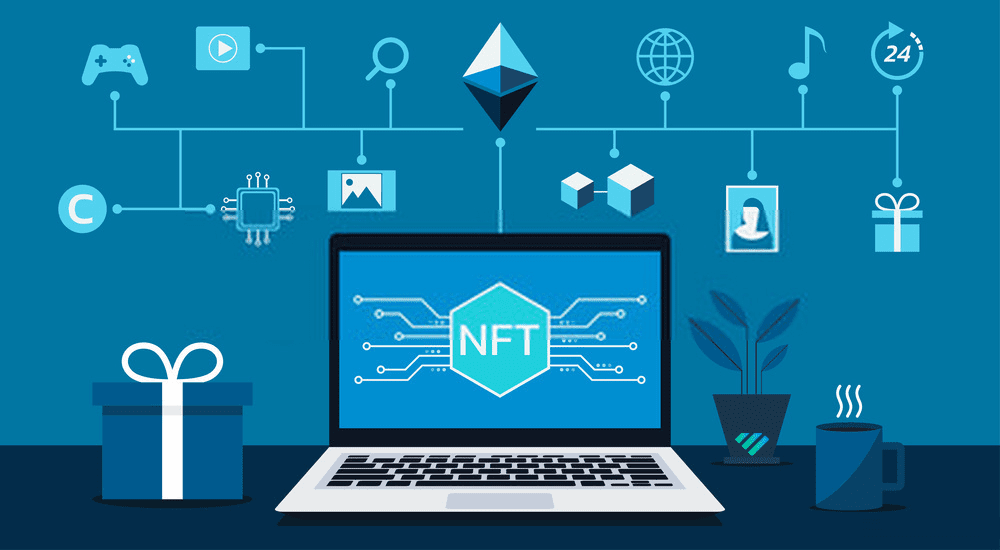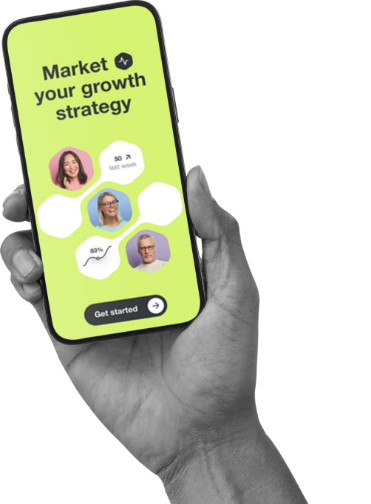The NFT (non-fungible token) marketplace is booming day by day. App developers and entrepreneurs have shown more interest in developing an NFT marketplace that enables them to search for different crypto platforms, manage their digital assets online, and trade NFT easily. NFT Marketplace development includes an extensive range of practices. It can be design development, NFT marketplace website update, and blockchain development. The users are required to build an account where they can upload digital artwork and make sales. Mostly, these marketplaces are higher in demand by businesses as they help clients to specialize in selling their online artworks or assets.
The recent statistics provided by News Agency Associated Press (News 18,) the NFT marketplace has expanded to approximately $41 billion in 2021. The recent data specifies that the NFT field has surpassed the conventional art sector which stood at $50 billion in 2020. In the year 2023, new NFT marketplaces have emerged such as OpenSea, SuperRare, Nifty Gateway, Paddle8, and Binance that help users buy and sell NFTs and find new collections related to art, music, videos, and digital assets and gaming accessories.
If you are a new investor and have recently started an NFT business, you might get confused about how to create an NFT marketplace. The article will help companies assess the changing marketing trends and customer perceptions that will help them build an NFT platform that resonates with client’s opinions and choices. NFT marketers can learn how the NFT marketplace works and help them choose the top NFT marketplace.
The last part of the article expounds the key components and features of NFT apps. The users also get significant knowledge of how NFT apps are beneficial for consumers in operating their NFT assets securely. Businesses can manage real-time inventory tracking, customizable assets, and streamline payment options.
THE SIGNIFICANCE OF NFT DEVELOPMENT FOR YOUR BUSINESS
From building a unique digital marketplace where businesses create and sell their digital assets and leverage blockchain technology for secure and transparent transactions, NFT has molded digital assets and provided innovative possibilities for businesses across different sectors. Along with receiving ownership rights, and financial rewards, NFT presents exciting possibilities for businesses.
Let’s read about some significant benefits:
-
Determine the legitimacy of an item
If you are a new crypto trader, it will be challenging for you to prove the authenticity of an item while creating your digital asset. NFTs allow users to manage the ownership of digital assets they are interested in creating. Businesses make a list of different categories of NFT items that can be sold flexibly and rapidly. Digital assets including art, music, in-game items, videos, clothes, artwork, and vehicles are significant for secure NFT trading in the real-world marketplace and metaverse.
-
NFT increases brand visibility
Revolutionized NFT marketplace improves brand visibility allowing businesses to create exclusive digital assets. NFT marketplace development companies create alluring videos to develop brand awareness among potential customers. Let’s suppose you have an online furniture store and desire to showcase your business to a broad audience. You can share videos on social media that highlight the significant features of the brand.
Moreover, companies also provide unique and exclusive product offerings. The incentives comprise discounts or having access to new product launches along with exclusive gifts and rewards. Such offerings entice users to take part in the sale and buy your products. The customers get a digital proof of purchase that makes their purchases more secure. Thus, NFT improves brand reach and keeps potential business in front of a wider audience.
-
Build a global customer base
As digital currency is now widely used by consumers, many businesses accept payments in the form of cryptocurrency. Digital mode of payment provides an easy and secure way of payment; the customers do not have to worry about exchange rates or transaction fees. New businesses are linked with new customers and access to new markets globally.
-
Employ open innovation in the NFT creation
The Digital NFT marketplace allows businesses to create digital assets related to a specific project. Companies can work collaboratively with customers, partners, and dealers in the product development process. They stay updated with the latest trends, and practices that help clients explore the changing NFT landscape.
-
NFT creates online advertising campaigns
If you are an NFT marketplace creator, you might have an idea of how to engage clients directly by generating online advertising campaigns.
What Are the Essential Features of NFT Apps?
1. Smart Contracts with Blockchain Integration
Smart contracts, a digital database runs on blockchain technology. Smart contracts are self-executing contracts with agreements directly written into code. Once, the contracts are integrated with a blockchain, they become accurate, and transparent and cannot be altered. Smart contracts are positioned on a blockchain platform, Ethereum, Binance, and Smart Chain that offer low costs and high levels of security in storing the immutable record of all transactions.
The blockchain ledger is public and distributed, therefore the users have secure access to view their contract transactions. Digital assets are verified and enforced digitally using smart contracts. Compared to traditional legal agreements, smart contracts offer flexible and managing agreements between two or more parties. It helps build trust between the two parties and reduces the risk of fraud. The NFT is created and can be traded flexibly on a marketplace once the smart contract has been deployed. Business can improve their existing business areas, and streamline their business models and financing services. Hence, smart contract technology offers authentic, scalable, and secure transaction and ensure secure ownership of digital assets.

2. Token Standardization: ERC-721 and ERC-1155
The essential feature of Ethereum comprises token standards that enable expert NFT developers to build their applications. The outstanding Ethereum token standards ERC-721 and ERC-1155 are connected with the non-fungible token (NFT) and their applications.
ERC-721, a revolutionary token standard forms an essential NFT creation pillar in Ethereum’s ecosystem. It provides a set of standardized APIs for developers to create, and manage their exclusive digital assets on the blockchain. The ERC-721 tokens ensure complete security, uniqueness, and ownership of digital assets. Exploring various options of the token standards has enabled NFT developers to create applications that help in conducting NFT batch minting, transforming property into NFTs, and doing NFT business on Web3. Individuals, using the apps can flexibly transfer NFTs between accounts and trade NFTs for other currencies. Thus, the ERC-721 token standard has dominated the crypto landscape, offering security, integrity, and transparency of all NFT transactions.
ERC-1155, a multi-token standard maintains both fungible and non-fungible tokens. Presently, these tokens are used in the Web3 gaming space. With ERC-1155, businesses can store countless items in a single contract and exchange various items in a single transaction.

3. Interoperability and Scalability of NFT apps
Expert NFT developers ensure that NFT apps comprising interoperability and scalability enable the users to create, trade, or transfer NFTs and assets across different ecosystems. Interoperability allows different NFT platforms to work together to transfer NFTs from one platform to another or use NFTs as currency on another platform. Interoperability allows NFT apps to work on multiple blockchain networks. Bringing more flexibility to NFT holders, the apps facilitate both individuals and companies to manage their digital assets or currency in a variety of ways. Businesses can create different NFT projects and can engage with collective trading across different ecosystems.
Scalability in NFT apps is designed to meet the growing demands of decentralized applications to handle huge transactions involving NFTs. Companies can avail of Zero-Knowledge Rollups technology that increases bandwidth and makes transaction processing quicker. Employing this scaling solution will optimize the speed, processing 9000 transactions per second with zero gas fees during minting or transferring digital assets.

4. Decentralized Storage
NFT apps integrated with decentralized storage efficiently store files for free on the blockchain network. The model secures ownership, empowering the NFT creators to showcase their talents and gain control over their work. Additionally, it connects blockchain and peer-to-peer networks to distribute and store NFT data across multiple nodes. Therefore, it provides high accessibility to users. The storage platforms are integrated with blockchain networks such as Ethereum, and Binance Smart Chain that provide seamless interaction between different networks.
Multiple decentralized storage platforms comprise various features that check how NFT apps work on various platforms and how they benefit the users. The pin manager in the storing system provides easy access to NFT files. The users can smoothly view, and organize their significant data and files. Moreover, powerful API end-points help to pin anything on the system. Another significant aspect is the robust recovery system in the app that retrieves important data or files.

5. User-friendly interface of NFT apps
Designing a user-friendly interface is an essential feature of NFT apps. The development team works in collaboration with app designers to create an appealing visually appealing interface that can be easily navigated by the users. Moreover, the colorful and attractive interface allows consumers to search various sections including searching filters, read detailed product descriptions, or make online payments. The app improves the user experience allowing customers to buy, sell, and monetize their digital creations.

Step-by-Step Guide to create an NFT App
-
Ideation and Conceptualization
App development services allow NFT users to figure out what they want to create. Whether it is digital art, an image, an audio production, or a short animated video clip, NFT users should produce amazing pieces of digital media that fascinate consumers.
-
Choose your favorite NFT platform
Generating and selling an NFT requires companies to create an NFT auction platform to mint an NFT. Many companies opt for Ethereum, a common and open-source blockchain platform for NFT companies to launch their product. The Ethereum blockchain allows NFT marketers to buy Ether coins on an exchange, and transfer them to their designated crypto wallet. Some users prefer Binance as a crypto trading platform. For new users, Binance offers a friendly way of buying, selling, and trading crypto. When users have purchased some Ether, they must create a cryptocurrency wallet to store currency or leave coins in an exchange. A crypto wallet connects users to the NFT marketplace.
-
Decide an appropriate marketplace
Let’s suppose, you are an artist or painter, You should opt for the marketplace that turns your artwork involving painting, drawing, photography, or videos into an NFT. Finding the right market implies users exploring the NFT marketplace to choose the digital assets they are interested in. They should enlist different kinds of NFTs that attract the audience the most. Consequently, individuals and businesses should evaluate the timeframe to build their marketplace in both the real world and the metaverse. Thus, companies should ensure that the NFT creation process should be simple and flexible, suitable for newcomers who have recently joined the NFT marketplace.
-
Connecting to OpenSea
Creating an NFT indicates that the company is ready for the documentation stage of the NFT development process. Once the process is complete, the NFT marketplace company takes charge and demonstrates a comprehensive framework. A reliable context analyzes the company’s objectives and goals and creates unique NFTs that could be sold on various NFT trading platforms. To begin with, when making a unique digital item, the NFT owner should log into OpenSea, with their NFT wallet. NFT holder is asked to choose and create a new collection. Then consumers are requested to choose a contract. Either they create a contract of their own or use the OpenSea contract.
-
Require Assistance of NFT experts
As new marketers join the NFT marketplace, it becomes a prerequisite for companies to choose a logo and a banner for the collection they desire to launch. The front-end, and back-end designers knowing blockchain technologies assist companies in developing portals and apps for NFT buyers, sellers, creators, and the marketplace admin. As the portal gets completed, enterprises transfer their profile including 3D imagery or GIFs of their NFT artwork. They name the file and write a brief description that makes tokens more impressive and appealing to new customers.
-
Attractive UI/UX Design
At this stage, NFT companies make a comprehensive analysis of the NFT products and services they opt to launch in the NFT market. The teams discuss the essential and optional features of the product including creating magnificent UI/UX Design. Having a visually appealing interface and UI/UX Design improves user experience and makes navigation easier for consumers. Building an exceptional NFT marketplace implies companies design an app that works quickly, resonates with consumers’ choices, and increases the usability of consumers.
-
Development and testing
After the development of the user interface, storage settings, and the NFTs, the front end is unified with the back end. The developed marketplace is deployed on a server. The app design is now ready for testing. QA specialists test the app to fix any bugs before going live. Moreover, they also identify and solve every backlog. Testing ensures quality performance and assures that the app is running correctly.
-
Publishing your first NFT
For beginners, if they publish their NFTs at a time, they might have to huge fees. Therefore, it is recommended to sell several products or services together as a single combined unit. Moreover, users can easily mint a selected number of tokens at the same time and modify the increasing gas fees simultaneously. NFT companies should stay abreast with recent cryptocurrency news as Ethereum gas prices alter with changing marketing trends. Before publishing NFT trades should carefully work on their collections, and ensure that all NFTs reside in the right one. It will help their NFT artwork to be easily located by an extensive audience and attract potential buyers to access the NFTs for buying and selling.
Conclusion
By understanding NFT development, businesses can establish ownership rights in the NTF market, tap into new business streams, and navigate the changing digital landscape. NFT Marketplace is a platform for users to choose their favorite NFT platform. On this platform, they can mint, sell, and buy NFT collections. Creating a thriving NFT marketplace allows users to analyze the NFT marketplace and understand the ecosystem of NFT platforms. Individuals and crypto entrepreneurs determine the blockchains on which the NFT Marketplace will be built. NFT app development has generated secure and user-friendliness apps that allow businesses to sell, buy, trade, and manage their non-fungible tokens easily and securely.
With the help of a marketplace app including smart contracts help store your NFT data. Storefront provides information about owners, bids, and previews, and attracts new users on the NFT marketplace. The other important apps, Multiple Wallet Support and Up-shot are significant for crypto exchange and NFT Marketplace. The apps benefit creators, buyers, and sellers in NFTs, buying, selling, and asset management.







